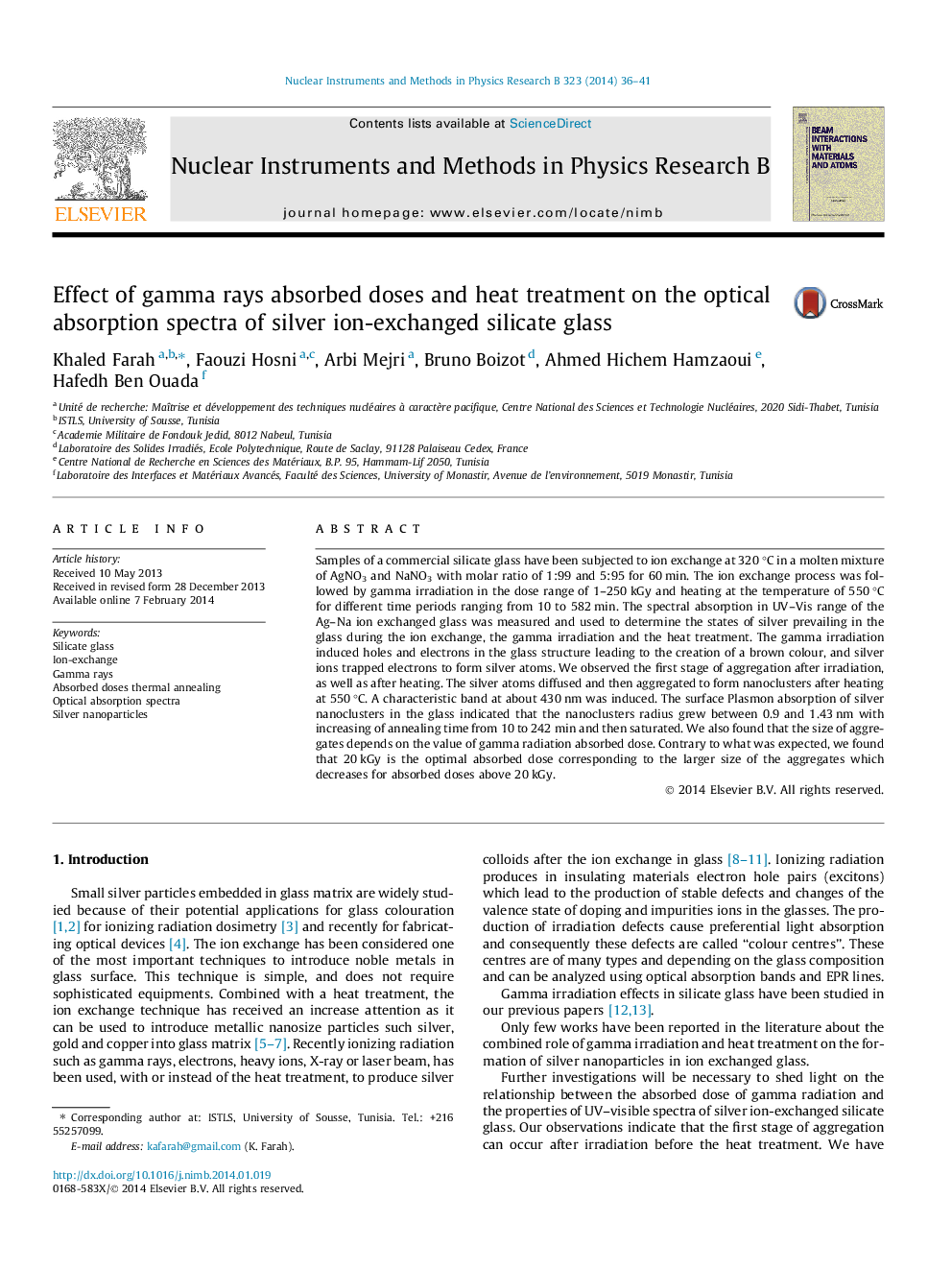| Article ID | Journal | Published Year | Pages | File Type |
|---|---|---|---|---|
| 1683280 | Nuclear Instruments and Methods in Physics Research Section B: Beam Interactions with Materials and Atoms | 2014 | 6 Pages |
Samples of a commercial silicate glass have been subjected to ion exchange at 320 °C in a molten mixture of AgNO3 and NaNO3 with molar ratio of 1:99 and 5:95 for 60 min. The ion exchange process was followed by gamma irradiation in the dose range of 1–250 kGy and heating at the temperature of 550 °C for different time periods ranging from 10 to 582 min. The spectral absorption in UV–Vis range of the Ag–Na ion exchanged glass was measured and used to determine the states of silver prevailing in the glass during the ion exchange, the gamma irradiation and the heat treatment. The gamma irradiation induced holes and electrons in the glass structure leading to the creation of a brown colour, and silver ions trapped electrons to form silver atoms. We observed the first stage of aggregation after irradiation, as well as after heating. The silver atoms diffused and then aggregated to form nanoclusters after heating at 550 °C. A characteristic band at about 430 nm was induced. The surface Plasmon absorption of silver nanoclusters in the glass indicated that the nanoclusters radius grew between 0.9 and 1.43 nm with increasing of annealing time from 10 to 242 min and then saturated. We also found that the size of aggregates depends on the value of gamma radiation absorbed dose. Contrary to what was expected, we found that 20 kGy is the optimal absorbed dose corresponding to the larger size of the aggregates which decreases for absorbed doses above 20 kGy.
